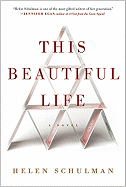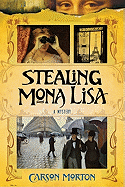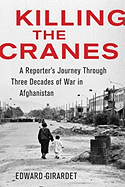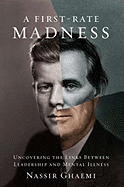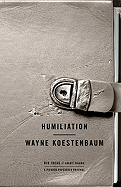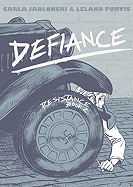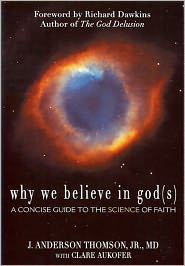 "Andy" Thomson and Clare Aukofer's small book, Why We Believe in God(s): A Concise Guide to the Science of Faith (Pitchstone Publishing), is generating some big buzz on newspaper op-ed pages, including this recent piece in the L.A. Times.
"Andy" Thomson and Clare Aukofer's small book, Why We Believe in God(s): A Concise Guide to the Science of Faith (Pitchstone Publishing), is generating some big buzz on newspaper op-ed pages, including this recent piece in the L.A. Times.
That's because the authors--J. Anderson Thompson, a University of Virginia-affiliated psychiatrist, and writer Clare Aukofer--have clearly and concisely put together an argument about how human neurology affects human beliefs in divinities and the development of religious faith, fundamentalism and fanaticism.
Speaking by telephone from his Charlottesville office, Thomson explained that he became interested in the science of faith while researching suicide terrorism, which he began doing after 9/11. His son worked close to Ground Zero, and although he was not injured in that day's terrible events, Thomson wanted to know how and why people would carry out such brutal acts in the name of a god. Eventually, Thomson put together a talk that he filmed and put on the Web. When it garnered more than 350,000 page views, he thought: other people want to learn about this, too.
"At that point I was not thinking about writing any sort of book," Thomson said. "I'm a practicing psychiatrist--not an academic, and not an author. But after I posted another talk based on the material included in the book's second half, we realized that there is not other publication like this, one that is short, easily read, and provides the basics of how human minds generate religious belief."
 One of the human traits Thomson and Aukofer examine is attachment. "Any time you see a trait, you want to think in functional terms," Thomson explained. "What does it do? What problem does it solve?" Attachment helps us to literally and figuratively latch on to our earliest caretakers, providing safety and survival. "The attachment system probably started to evolve 65 to 70 million years ago, when mammals survived the wipeout of dinosaurs, and their spread led to more and more helpless infants who needed to have a system to keep them connected to their sources of survival."
One of the human traits Thomson and Aukofer examine is attachment. "Any time you see a trait, you want to think in functional terms," Thomson explained. "What does it do? What problem does it solve?" Attachment helps us to literally and figuratively latch on to our earliest caretakers, providing safety and survival. "The attachment system probably started to evolve 65 to 70 million years ago, when mammals survived the wipeout of dinosaurs, and their spread led to more and more helpless infants who needed to have a system to keep them connected to their sources of survival."
For Thomson, this illustrates one of the basic parts of human religious belief: attachment to a being that helps them to survive. He continued, "It shows that the basics of religion are tied to the basics of our evolutionary adaptation."
Sound simple? "That was one of the other purposes of writing this book," Thomson said. "We wanted to do something that would demonstrate that you don't need specialty knowledge to understand the dynamics of religion and how it grew out of our neurology. We wanted to lay this out in a way that anybody could understand, grasp, and turn around and share this knowledge."
A few of their key devices are worth highlighting. For example, the "fast-food analogy." "We're quite serious," Thomson said. "We think if you understand the psychology of fast food, you'll understand the psychology of religion."
He explained that our common human origins in Africa as hunter-gatherers meant that there were certain foods that were very difficult to obtain--so when a person or group happened upon one of the sources of those foods, they would binge on that substance, be it animal flesh, fatty nuts or fresh berries. "We don't have cravings for greens and grains because those were relatively easy to get, and they weren't crucial to survival. Meat, being a compact source of calories and protein, created cravings. The people who didn't crave things that gave them crucial nutrients like vitamin C didn't survive. We're the descendants of the ones who had cravings."
Religion, as Thomson and Aukofer carefully show, gives us ways to get a "hit" of pleasure, just like that much-craved food does. "Religion gives us a parent more powerful than any ordinary parent, a sense of safety and reassurance much greater than anything a mere human can provide," Thomson said. "You don't even have to have zealots and fundamentalists to illustrate this. Handel's Messiah sung in a cathedral will move me, an atheist, in a way that singing on my own never could. It's a powerful stimulus."
If you crave an easily digested overview of how modern science can explain religious faith, you might want to take a look at Why We Believe in God(s)--it might not be fast food, but it is a fast read.
Portrait of the Artist: J. Anderson Thomson
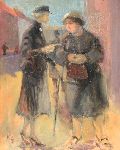 I'm telling you about this because it points up something quite wonderful and low-tech about publishing: despite e-books, digital media, bookstore closings and distribution challenges, one of the most important elements is still reader-to-reader contact, and a top New York publisher is still intimately and urgently concerned about fostering that contact.
I'm telling you about this because it points up something quite wonderful and low-tech about publishing: despite e-books, digital media, bookstore closings and distribution challenges, one of the most important elements is still reader-to-reader contact, and a top New York publisher is still intimately and urgently concerned about fostering that contact.


 "Andy" Thomson and Clare Aukofer's small book, Why We Believe in God(s): A Concise Guide to the Science of Faith (Pitchstone Publishing), is generating some big buzz on newspaper op-ed pages, including this recent piece in the
"Andy" Thomson and Clare Aukofer's small book, Why We Believe in God(s): A Concise Guide to the Science of Faith (Pitchstone Publishing), is generating some big buzz on newspaper op-ed pages, including this recent piece in the  One of the human traits Thomson and Aukofer examine is attachment. "Any time you see a trait, you want to think in functional terms," Thomson explained. "What does it do? What problem does it solve?" Attachment helps us to literally and figuratively latch on to our earliest caretakers, providing safety and survival. "The attachment system probably started to evolve 65 to 70 million years ago, when mammals survived the wipeout of dinosaurs, and their spread led to more and more helpless infants who needed to have a system to keep them connected to their sources of survival."
One of the human traits Thomson and Aukofer examine is attachment. "Any time you see a trait, you want to think in functional terms," Thomson explained. "What does it do? What problem does it solve?" Attachment helps us to literally and figuratively latch on to our earliest caretakers, providing safety and survival. "The attachment system probably started to evolve 65 to 70 million years ago, when mammals survived the wipeout of dinosaurs, and their spread led to more and more helpless infants who needed to have a system to keep them connected to their sources of survival." Beijing Welcomes You: Unveiling the Capital City of the Future by Tom Scocca details Slate contributor Scocca's discoveries in China after he followed his wife there while she took an assignment. He arrived in 2004, just in time to watch the preparations for the 2008 Olympic Games, which the Chinese did up big.
Beijing Welcomes You: Unveiling the Capital City of the Future by Tom Scocca details Slate contributor Scocca's discoveries in China after he followed his wife there while she took an assignment. He arrived in 2004, just in time to watch the preparations for the 2008 Olympic Games, which the Chinese did up big.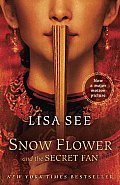
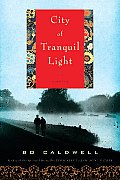 Fiction about China: Try Lisa See's novels, which include Snow Flower and the Secret Fan (a major motion picture release this summer), Peony in Love and linked novels Shanghai Girls and Dreams of Joy. See is of Chinese descent and combines historical research with a passion for China that makes for unforgettable reading. A completely different view of 20th-century China comes from the perspective of an American missionary couple in Bo Caldwell's City of Tranquil Light, the highly praised author's first novel in more than a decade and a beautifully wrought portrait of a marriage.
Fiction about China: Try Lisa See's novels, which include Snow Flower and the Secret Fan (a major motion picture release this summer), Peony in Love and linked novels Shanghai Girls and Dreams of Joy. See is of Chinese descent and combines historical research with a passion for China that makes for unforgettable reading. A completely different view of 20th-century China comes from the perspective of an American missionary couple in Bo Caldwell's City of Tranquil Light, the highly praised author's first novel in more than a decade and a beautifully wrought portrait of a marriage.
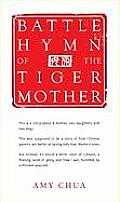 Nonfiction about China: Rather than give you expected titles, we've chosen two that could not be more different. The late poet Iris Chang's The Rape of Nanking: The Forgotten Holocaust of World War II examines the slaughter of hundreds of thousands of Chinese soldiers and civilians by Japanese soldiers after the city fell in 1937. Amy Chua's controversial Battle Hymn of the Tiger Mother is about Chua's decision to try traditional Chinese parenting techniques in 21st-century America. Both books will show you some of what makes the Chinese spirit indomitable.
Nonfiction about China: Rather than give you expected titles, we've chosen two that could not be more different. The late poet Iris Chang's The Rape of Nanking: The Forgotten Holocaust of World War II examines the slaughter of hundreds of thousands of Chinese soldiers and civilians by Japanese soldiers after the city fell in 1937. Amy Chua's controversial Battle Hymn of the Tiger Mother is about Chua's decision to try traditional Chinese parenting techniques in 21st-century America. Both books will show you some of what makes the Chinese spirit indomitable.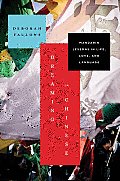
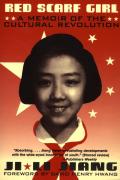 Memoir about China: For a parallel experience to Scocca's, try Deborah Fallows's Dreaming in Chinese: Mandarin Lessons in Life, Love, and Language, a memoir from 2010 about the author's three years learning Mandarin Chinese and using its frustrating and rich connotations and symbols to interpret everyday life. Red Scarf Girl: A Memoir of the Cultural Revolution by Ji-Li Jiang is an intense personal look at what happened to innocent people during Mao's “Great Leap Forward,” and shows how a society can fall apart even while its most powerful members are pretending that everything works seamlessly and harmoniously.
Memoir about China: For a parallel experience to Scocca's, try Deborah Fallows's Dreaming in Chinese: Mandarin Lessons in Life, Love, and Language, a memoir from 2010 about the author's three years learning Mandarin Chinese and using its frustrating and rich connotations and symbols to interpret everyday life. Red Scarf Girl: A Memoir of the Cultural Revolution by Ji-Li Jiang is an intense personal look at what happened to innocent people during Mao's “Great Leap Forward,” and shows how a society can fall apart even while its most powerful members are pretending that everything works seamlessly and harmoniously. Book-club members, rejoice! One of your favorite titles is not only being adapted to the silver screen--a favorite screen star may be its director.
Book-club members, rejoice! One of your favorite titles is not only being adapted to the silver screen--a favorite screen star may be its director.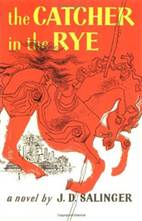 From beach reads to back-to-school reads... for adults. MSNBC.com recommended "
From beach reads to back-to-school reads... for adults. MSNBC.com recommended " Girl without another Dragon Tattoo.
Girl without another Dragon Tattoo.